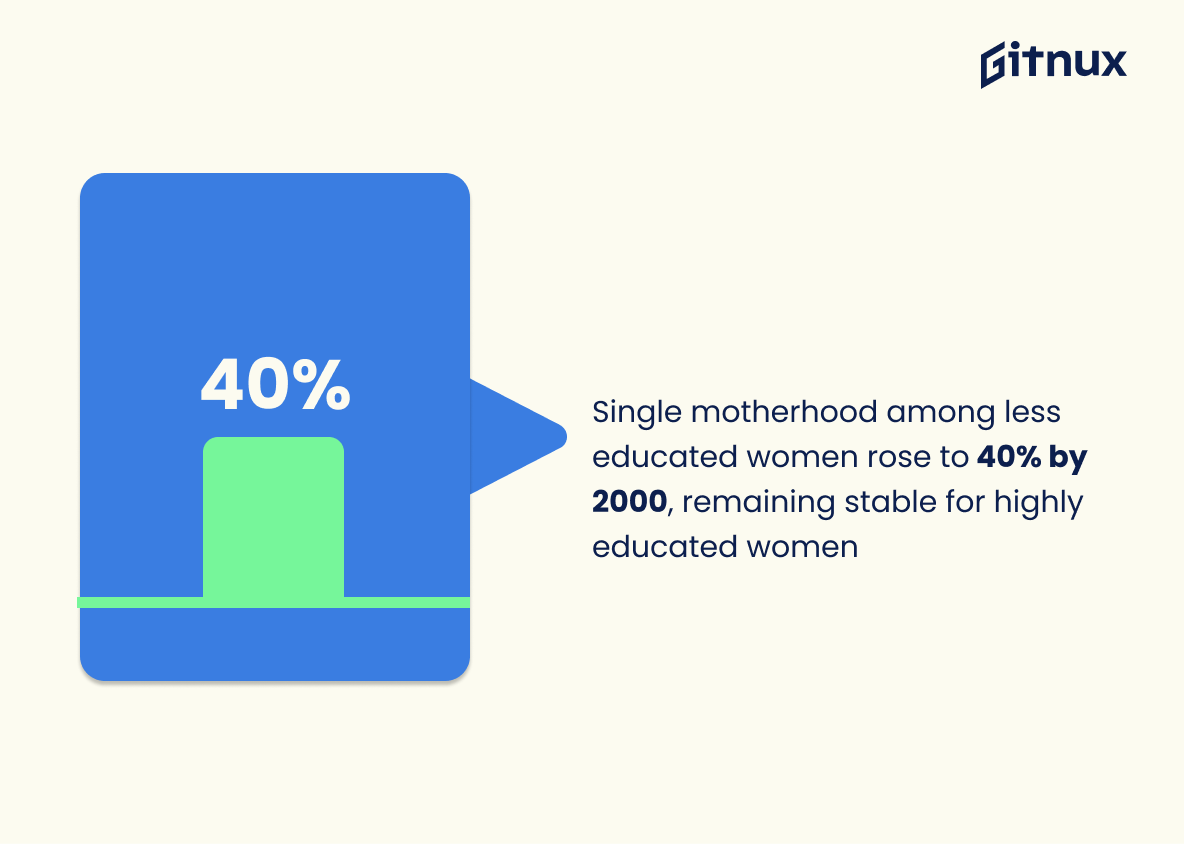Single motherhood is a growing phenomenon in the United States, with an estimated 11.7 million single mothers in the country. Unfortunately, single motherhood often comes with a high price tag. Single mothers are more likely to live in poverty than married couples, and the poverty rate for single mothers is nearly three times higher than that of married couples.
In this article, we will take a look at the latest single mother poverty statistics and explore the reasons behind this alarming trend. We will also discuss potential solutions to help single mothers break the cycle of poverty and provide a better life for their children.
Single Mother Poverty: Most Important Statistics
The percentage of Black families with a single mother living below the poverty level decreased from 48.1% in 1990 to 29.3% in 2021.
81% of solo parents are mothers, 19% are fathers.
Single Mother Poverty: Statistics Overview
74.3% of young mothers and 74.9% of other young women reported being employed in June 2021, with 78.8% of young single mothers at work.
Single mothers are more likely to be employed than other mothers, which can help reduce poverty levels for single mothers.
55% of all jobs lost in the US since the pandemic began are held by women.
This highlights the disproportionate impact that the pandemic has had on women, and in particular single mothers. This data can be used to inform policy decisions and create targeted programs to help single mothers who have been affected by the pandemic.
In 2010, 16.1% of single mothers had a college degree or more, compared to 17.0% with less than a high school diploma, a stark contrast to 2001 when those with less than high school were more common than college graduates.
Single mothers are increasingly achieving higher levels of educational attainment, which is important for reducing poverty. Higher education can lead to better job opportunities and higher wages, which can help single mothers provide for themselves and their families.
Single motherhood among low educated women increased from 15% to 40% from 1960 to 2000, while it remained relatively stable among highly educated women.
Educational differences play a role in the prevalence of single motherhood, and thus, poverty rates in single-mother households.
The percentage of Black families with a single mother living below the poverty level decreased from 48.1% in 1990 to 29.3% in 2021.
Although there is still a significant gap between Black and White households with a single mother living in poverty, there has been a decrease in poverty levels for Black single mother households over the past 30 years.
This decrease indicates that efforts to reduce poverty levels for single mothers have been successful and should be continued.
30% of solo moms are black, compared to 12% of cohabiting moms and 7% of married moms.
That single mothers are disproportionately affected by poverty, especially single mothers of color. This highlights the need for policies and initiatives that focus on helping single mothers, especially those of color, to reduce poverty.
44.6% of Greek speaking single mothers in Cyprus experienced psychological distress in 2012, and this was strongly associated with variables such as low monthly family income, economic difficulties, higher educational level, age group 35-44 years, and pre-existing illness.
This matters in the context of Single Mother Poverty Statistics because it highlights the need for support and resources for single mothers in order to reduce psychological distress and improve their overall quality of life.
Single mothers experienced higher rates of chronic depression if they had experienced prior marital difficulties or widowhood, but rates decreased with time spent in single parenthood.
It suggests that single mothers may be more likely to experience depression due to the stress of poverty and lack of support, but that with time and support, their mental health can improve.
Single fathers had higher average taxable income, non-work income, and total income than single mothers ($56,458 vs. $35,287, $4879 vs. $1320, and $57,778 vs. $40,165 respectively, p < 0.05).
This matters in the context of single mother poverty statistics because it highlights the economic disparities between single fathers and single mothers, and the need for policies and programs that can help to reduce poverty among single mothers.
81% of solo parents are mothers, 19% are fathers.
This highlights the gender disparity in single parenting, which can have implications for the economic security of single mothers.
Single mothers are more likely to experience poverty and other economic hardships, and this statistic helps to illustrate the disproportionate burden that is placed on mothers in this situation.
Conclusion
Single mother poverty is a real issue that affects millions of women and their children in the United States. The statistics are sobering, but they also demonstrate the need for more support and resources for single mothers.
With the right policies and programs in place, we can make a real difference in the lives of single mothers and their families. It is up to all of us to do our part to ensure that single mothers are given the support they need to break the cycle of poverty.
References
1 – https://iwpr.org/wp-content/uploads/2022/01/Young-Mothers-Survey-Brief_FINAL.pdf
2 – https://womenscouncil.wi.gov/Documents/SingleMothersCOVIDInfoSheet_F_Corr.pdf
3 – https://www.ncbi.nlm.nih.gov/pmc/articles/PMC5300078/
4 – https://cadmus.eui.eu/bitstream/handle/1814/53104/H%C3%A4rk%C3%B6nen_Ch2.pdf?sequence=2
5 – https://www.statista.com/statistics/205114/percentage-of-poor-black-families-with-a-female-householder-in-the-us/#:~:text=In%201990%2C%2048.1%20percent%20of,households%20with%20a%20single%20mother.
6 – https://www.pewresearch.org/social-trends/2018/04/25/the-changing-profile-of-unmarried-parents/
7 – https://bmcwomenshealth.biomedcentral.com/articles/10.1186/s12905-019-0763-9
8 – https://pubmed.ncbi.nlm.nih.gov/9122302/
9 – https://www.ncbi.nlm.nih.gov/pmc/articles/PMC6982282/
10 – https://www.pewresearch.org/social-trends/2018/04/25/the-changing-profile-of-unmarried-parents/










